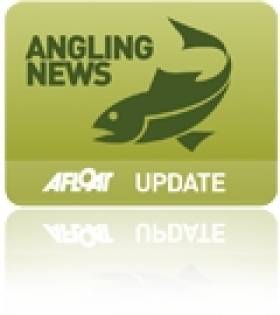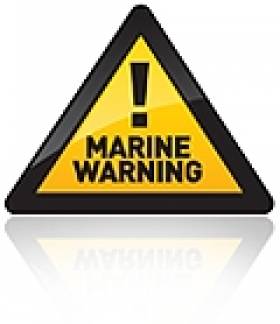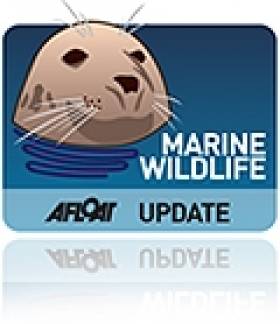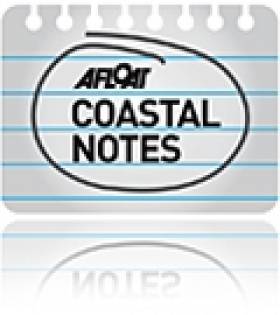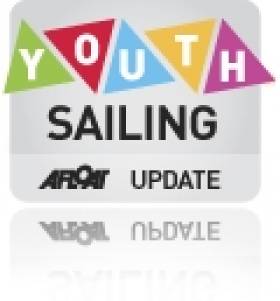Displaying items by tag: irish sea
Hopes for Evidence of Coral Reefs in Irish Sea
#MARINE WILDLIFE - Might there be evidence of coral reefs in the Irish Sea? Johnny Woodlock of the Irish Seal Sanctuary believes so.
Writing for Wildlife Extra, the Sea Fishery Advisory Group member recalls seeing a piece of coral that a former commercial trawler skipper said he had found in one of this nets more than 20 years ago while fishing off the Isle of Man.
Woodlock says he identified the sample as Lophelia pertusa, a coldwater coral that thrives in deeper water and one that was not previously linked to the Irish Sea, according to the records of the Marine Institute and the National Parks and Wildlife Service.
Then this past August, when Woodlock uncovered a similar piece of coral and identified it as the same species, he was able to find out the co-ordinates where both pieces had been netted and forwarded them to the Marine Institute.
Though the area of the Irish Sea in question "has been heavily trawled by larger boats pulling heavier nets for a number of years", Woodlock remains hopeful that the Marine Institute can find evidence of living coral in the depths.
Often mistaken for plant life, coral is actually a compact colony of very simple marine wildlife called polyps, encased in a skeleton of calcium carbonate which gives them their solid appearance.
Marine Life Researchers Get Free Passage Across Irish Sea
#MARINE WILDLIFE - Seatruck Ferries is providing free passage this autumn for surveyors with a UK-based marine wildlife charity to discover how many dolphins and seabirds make their home in the Irish Sea.
MARINElife will be extending its marine conservation research on existing sailings operating between Liverpool and Dublin - and it is hoped its surveyors will spot a variety of cetaceans en route, including minke whales, common dolphin, Harbour Porpoise and Risso's dolphins.
Grey seals, basking sharks and a host of seabirds from the gannet to the Manx Shearwater, which winters off the coast of Brazil, may also be spotted.
The charity will be running monthly scientific surveys - the first started last week on 27th September – and its recorded sightings will be posted on the MARINElife website.
It's expected that the data collected will contribute to a better understanding of the distribution and abundance of dolphins, porpoises, seals and seabirds in the Irish Sea.
The research with Seatruck Ferries also contributes to a larger project operating on ferries around the UK coastline.
Kevin Gilland, Seatruck Ferries representative involved in the project, said: "We are delighted to expand our help to MARINElife so they can further develop the understanding of the wildlife in the area. We look forward to hearing more about the wildlife encountered on these routes."
Adrian Shephard, trustee for MARINElife, commented that "ferries, or ships of opportunity as we refer to them, are a very convenient way of carrying out off-shore surveys.
"They allow us to access the same areas of ocean and monitor for changes over time - vital information which forms the basis of conservation decisions."
MARINElife research director Dr Tom Brereton described the ferry routes across the Irish Sea as "particularly vital as the area is an important passage for whale, dolphins, sharks and even turtles."
Welsh and Irish Ministers Check Out Celtic Sea Trout Project
#ANGLING - Sea trout were top of the agenda at a recent meeting between Welsh Deputy Fisheries Minister Alun Davies and Minister of State Fergus O’Dowd at Leinster House recently.
Both ministers were briefed about progress with the INTERREG IVa Ireland-Wales-funded Celtic Sea Trout Project, which finishes in 2013.
Sea trout are present in most coastal rivers discharging into the Irish Sea, and their status in freshwater and in the marine environment is central to the project.
By providing detailed information about the status of sea trout stocks, their genetics and their varied life histories, the project aims to enhance the fisheries for the benefit of all stakeholders.
Other important aims of the project are strengthening the contribution of sea trout to rural economies, to general quality of life and well-being and to national biodiversity - while sea trout life history variation may also contribute to understanding the effects of climate change.
For sustainable management the Celtic Sea Trout Project team is working on developing a number of management tools which will assist fisheries managers to assess fishery performance and better manage this valuable species. The requirement to manage sea trout sustainably across the Irish Sea was strongly emphasised.
Both ministers heard that engagement with anglers across the project has been important to provide sea trout scale samples, and that the project has served to increase awareness of the value of what Inland Fisheries Ireland (IFI) described as "this excellent angling species".
Minister Davies was also briefed about the role and broad responsibilities of IFI.
Marine Notice: Undersea Cable Repairs Off Kilmore Quay
#MARINE WARNING - In its latest Marine Notice to mariners in the Irish Sea, the Department of Transport, Tourism and Sport (DTTAS) advises of cable repairs being carried out east of Kilmore Quay in Co Wexford.
Operations commenced yesterday 6 September and will continue till approximately next Thursday 13 September, subject to the weather. The works will be undertaken by C/S Peter Faber (call sign FLEV).
During repairs the vessel will be links to the seabed by the cable and will have poor manoeuvrability. This will be signalled with shapes and/or lights as required. The vessel will also broadcast regular safety messages to give details of activity and position.
All vessens in the area, especially those engaged in fishing, are requested to give a wide berth, and not to pass between the repair vessel and the shore.
Full details, including co-ordinates, are included in Marine Notice No 48 of 2012, a PDF of which is available to read or download HERE.
Graduates to Learn About Marine Conservation in the Irish Sea
#MARINE WILDLIFE - The News & Star reports that four graduate students have joined an 11-month scheme run by the Cumbria Wildlife Trust to learn more about marine conservation in the Irish Sea.
The programme, which includes classes and on-the-job training, will see them work at the South Walney Nature Reserve near Barrow-in-Furness, which is designatied as a Site of Specific Scientific Intrest, a Special Area of Conservation and a Special Protection Area.
“The graduates will play a pivotal role in helping people to understand and value the wildlife that exists in the Irish Sea and what role they can play in both protecting and enjoying it," said programme manager Emily Baxter.
Late last year, the find of a rare leatherback turtle washed up in Cumbria was taken as a sign that the Irish Sea is hiding an unknown bounty of marine wildlife, and reinforced calls for the region to be designanted as a Marine Conservation Zone.
Irish Sea Level to Rise Almost 50cm by 2099
#COASTAL NOTES - It's an alarming figure by any means - new research shows that the level of the Irish Sea will rise by almost half a metre by the end of the century, leading to much more severe flooding along the east coast and elsewhere.
The results of research published by the Ryan Institute at NUI Galway, as reported by The Irish Times, show that sea level rises of up to 47cm are not out of the question.
They also indicate that sea surface temperatures will increase by nearly 2 degrees, which would have serious implications for marine wildlife and the fishing industry.
Dr Mike Hartnett of the Tyan Institute said the new research - from 3D model-based projections of the seas around Ireland - is the most comprehensive study of its kind, and confirms previous "tentative" studies in the area.
The news comes after national weather forecaster Met Éireann announced an incredible 0.75 degree rise in average temperature in Ireland - and a 5% increase in rainfall - over the past two decades alone.
And with recent flooding in Cork and Belfast causing millions of euro worth of damage, the real implications of such figures is coming closer to home.
The Irish Times has more on the story HERE.
#MARINE WILDLIFE - Blackpool could have its own 'Great Barrier Reef' if proposals to set up Marine Conservations Zones in the Irish Sea get the green light, as the Blackpool Gazette reports.
Earlier this month the Lancashire Wildlife Trust launched a campaign to recruit ‘Friends of Marine Conservation Zones’, hoping to inspire locals to support marine wildlife habitats along England and Wales' Irish Sea coastlines, and push the British government to make a firm commitment on all 127 proposed marine conservation zones.
As previously reported on Afloat.ie, Westminster has postponed making a decision on the network of planned marine sanctuaries till at least next year, and some conservation groups are concerned that fewer than a quarter of the proposed zones will be enacted by law.
"Time is running out for us to save our fragile seas," said Sir David Attenborough, vice president of The Wildlife Trusts, who urged the British government "to designate the full list of 127 sites now, for day by day the wildlife in these sites is being destroyed and damaged."
The Blackpool Gazette has more on the story HERE.
Isle of Man Lifeboat Rescues Stranded Pleasure Craft
#LIFEBOATS - IOM Today reports that the Isle of Man's Peel RNLI lifeboat crew went to the rescue of the pleasure craft Flying Fox, which suffered an engine room fire some 22 miles off the island's west coast.
Flying Fox was en route from Strangford to Holyhead with one person on board when the fire occurred early yesterday, leaving the 34-foot Nelson-type vessel stranded in the Irish Sea.
Relief lifeboat Bingo Lifeline - replacing the stations main lifeboat, Ruby Cleary, which is currently in Holyhead for a refit - was dispatched with a volunteer crew, who found the boat after a "difficult" search.
The vessel was taken in tow back to Peel in moderate seas. No injuries were reported.
Welsh Youngsters Learn at Ysgol y Môr (School of the Sea)
youthsailing – Schools from Ynys Môn (Isle of Anglesey) and Gwynedd have won praise from Welsh Government member Ieuan Wyn Jones for spearheading a revolutionary approach to education, which makes the marine environment a key part of learning.
At the Ysgol y Môr (School of the Sea) Race Day 2012, at the Plas Menai National Watersports Centre near Caernarfon, more than 200 children from 13 local schools demonstrated how they have developed their knowledge of subjects ranging from renewable energy technology to marine biology, as well as watersport skills, by taking part in the first initiative of its kind in the UK, being piloted over three years.
Mr Wyn Jones said: "I am very impressed with this pilot project. The schools have clearly got a great deal out of it and I want to work with the Ysgol y Môr team to see how we can develop it further."
Sponsored by nuclear power technology specialists EnergySolutions, who own Magnox Ltd, the day featured an inter-schools regatta of sailing, kayaking and windsurfing races: a marine renewables regatta, run by Engineering Your Future, showcasing pupils' work on solar powered boats, wind and water turbines, and fuel cell technology, culminating in a solar boat race; and a Classe de Mer (Classroom of the Sea) display, showcasing pupils' work on marine wildlife, conservation, maritime culture, history and landmarks on the Menai Strait, ocean sciences, coastal living and dune formation, art and literature.
The event also hosted an Ysgol y Môr Conference for 100 delegates, with Ieuan Wyn Jones AM as keynote speaker, a video about Nautisme en Finistere (Brittany's equivalent of Ysgol y Môr), and presentations by the region's head teachers and an independent assessor on the value of the programme.
Dave Callen, EnergySolutions' Engineering Manager at Magnox Wylfa Power Station, said: "Education is one of the keys to North West Wales' economic and cultural sustainability – and so are the region's marine resources, including energy. We are delighted to sponsor this inspiring event."
Hundreds of youngsters are learning subjects including renewable energy technologies and watersports.
Jon Philips, Director of Stakeholder Relations for the Nuclear Decommissioning Authority (NDA), one of the principal funders of the project, said: "The NDA is delighted to have supported this programme, which we hope will inspire future generations to consider the exciting employment and business opportunities associated with the coastal environment – creating an even more vibrant and exciting place to live and work."
Ysgol y Môr is the first initiative in the UK to use the marine environment as part of mainstream education.
It is modelled on a 30+ year educational programme in Brittany, which has been the driving force behind the growth of the region's highly successful marine industry. It has created major economic development and sustainable jobs, which have helped safeguard the Breton language and culture.
Ysgol y Môr is being piloted in the counties of Gwynedd and Ynys Môn. In the first phase, spanning three years, 1440 pupils from 16 schools are learning watersports skills. 1170 pupils are being taught a range of existing curriculum subjects in classes de mer ('classrooms of the sea'), across both counties.
The launch of Ysgol y Môr followed more than three years of development by North Wales Watersports and its partners. This included a fact finding mission for North Wales educationalists and local authority representatives in 2007 to Brittany, which has 20 dedicated 'classrooms of the sea' centres that have trained thousands of pupils.
The Ysgol y Môr programme is designed as a template for a new national approach to education, based on involving pupils more closely with their local environments, including mountains, forests and urban areas.
Sgrech Claims Second ISORA Win in Irish Sea Sailing Race
#ISORA– Welsh yacht Sgrech (skippered by Richard Tudor) took its second victory in a fortnight on the Irish Sea yesterday when it won ISORA's third race from Conwy in North Wales to Howth in North Dublin a distance of some 100-miles.
The ISORA fleet is now berthed in Howth to coincide with the BMW ICRA Nationals starting this Friday. ICRA preview and entry list of the 110 boat fleet here.
An unfortunate clash with other sporting events is being blamed for the fact that only 12 boats came to the start line in Conwy.
The course was : Start; West Constable (P) ; Archdeacon (P) ; Ethal (P) ; The Skerries (P) ; Finish in Howth.
The beat to Constable appeared to spread the fleet with “Sgrech” rounding first following closely by “Joker 2” and “Lancastrian” and “Adelie”. Close behind these were “Midnight Mojito” and “Madam Wen”. From Constable it was a direct course leaving Archdeacon, Ethal and The Skerries safely to Port.
The 90 mile leg to Howth was a run. Spinnaker reach and ending with a dead run into Howth. As forecast, the winds got lighter approaching Howth and the usual tricky conditions that Howth finishes are famous for appeared, light winds and strong tides.
“Sgrech” led the charge from Constable to the approach into Howth Sound, with a very strong following tide giving speeds over the ground of 15-16 knots at The Skerries. These conditions made short work of the long leg to Howth. The two “J” boats, “Sgrech” and “Joker 2” kept close together for the entire leg. Lancastrian and Midnight Mojito took a more southern route. “Adelie” and “Madam Wen” were just behind the leading group.
Four boats entered Howth Sound at the same time from slightly different directions. The J boats were too north and had to gybe to get into the Sound. During this manoeuvre and while the J boats were within several boat lengths of each other, “Joker 2” passed “Sgrech” but failed to monopolise on their position. Lancastrian was also caught and had to gybe in the very light conditions. However, Midnight Mojito got the course correct and stormed into the sound with wind and tide and shot over to take line
honours.
Despite the 100 mile course, the first four boats crossed the finish line in just over a minute!!! This would be difficult to achieve even in Bay Racing. The finish in Howth was provided by John Doran, Howth Yacht Club.
“Sgrech” won Class 1 and Overall. “Adeli” took Class 2 and 2nd Overall. “Lancastrian” won Class 1 Sliver Fleet while “Polished Manx” took Class 2 Silver Fleet.
The facilities in Conwy Marina and the Mulberry Bar & Restaurant were first class with a great evening had by all on Friday night. The Mulberry prepared a superb breakfast on the Saturday morning, getting everybody ready for the long race.
The next race is the 100– mile ISORA lynx metmAsts Pwllheli to Wicklow Race on the 2nd June.
Due to the generous sponsorship of lynx metmAsts, a complimentary Crew Bus will meet the 13.15 HSS from Dun Laoghaire and will bring crew from Holyhead to Pwllheli. There will also be a reception in Pwllheli Sailing Club on the Friday 1st June. This race will be the last qualifying race for those doing the Round Ireland race.
ISORA Race three results are avallable to download below.
Latest Irish Sea Offshore Sailing (ISORA) News




























